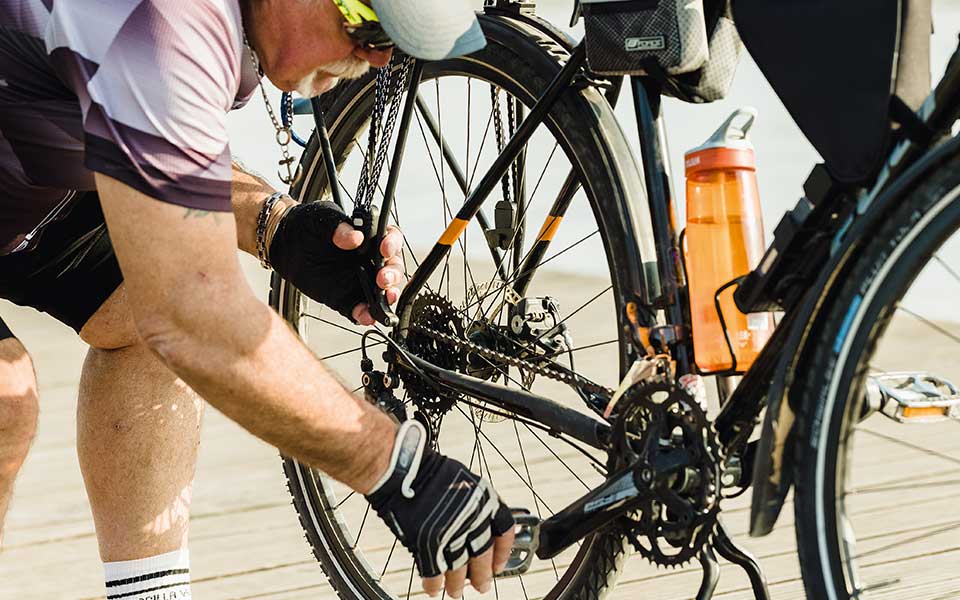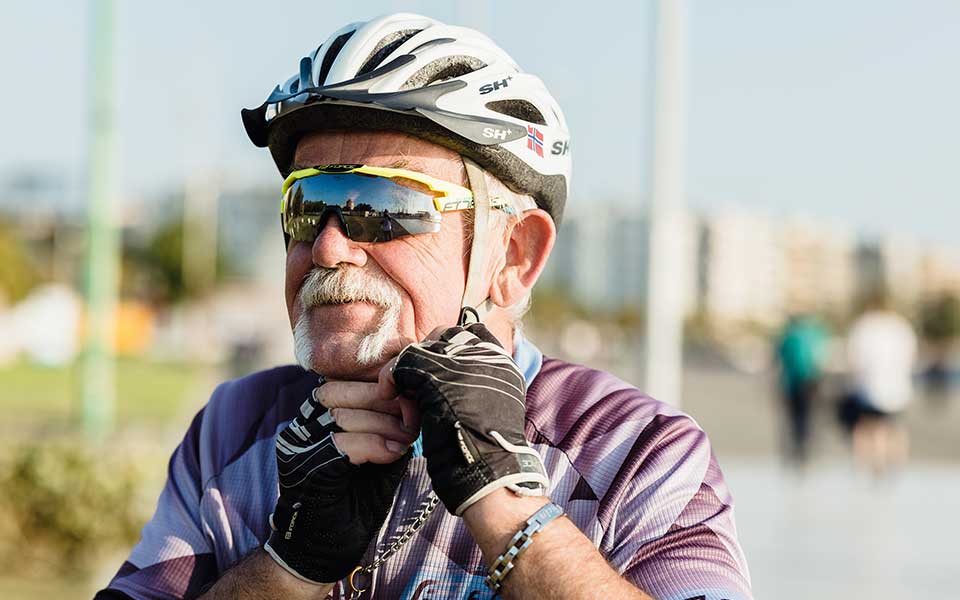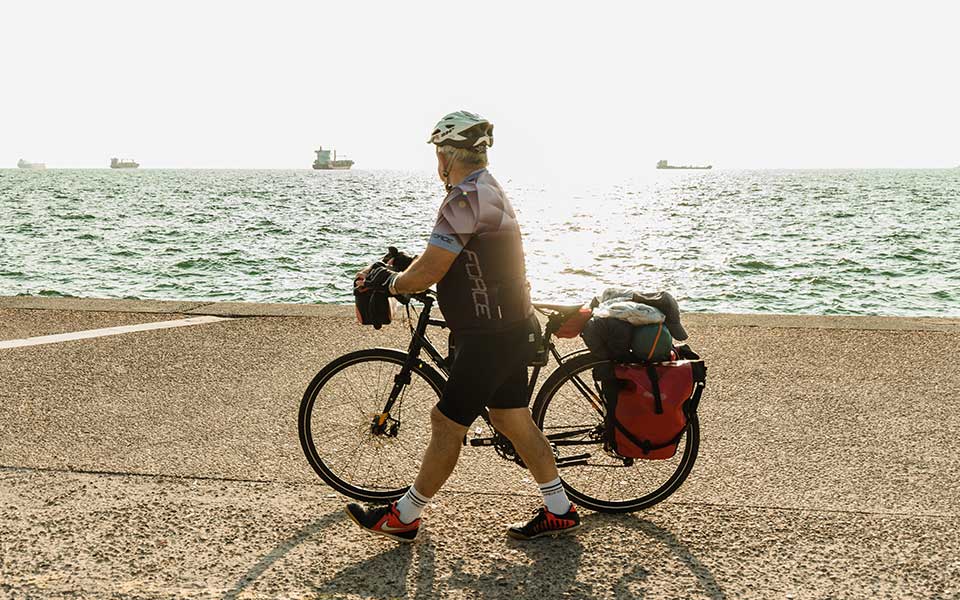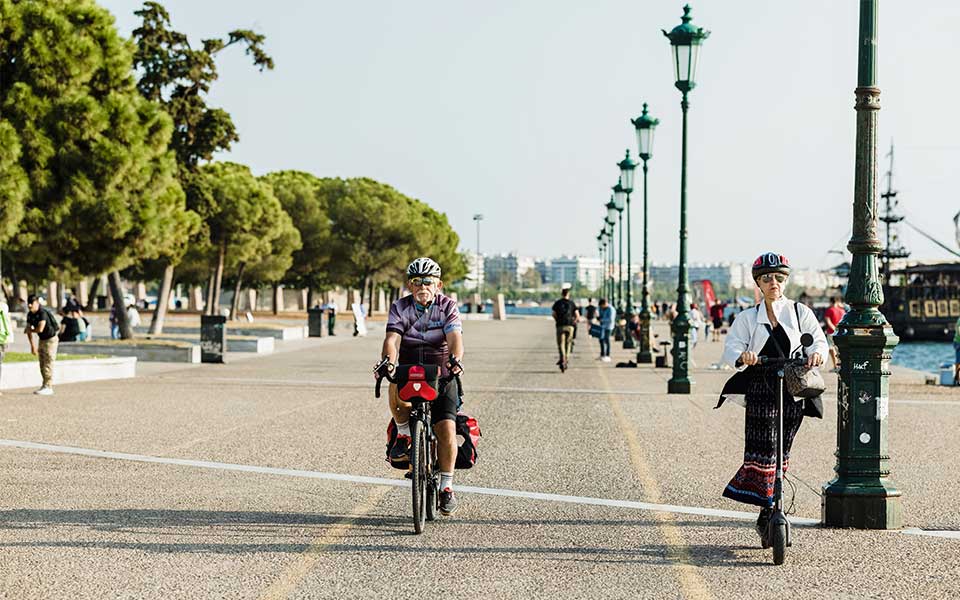Things have been going according to plan for Svein Andersen. The retired ship᾿s captain and avid cyclist has been living an exciting life since he first put out to sea in 1960. A maritime life had been his dream since early childhood; on his 15th birthday, with his parent’s signature in hand, he flew to London to join his first crew, starting out as a deckhand on an adventure that would last more than half a century. Signing on and off a series of ships, he didn᾿t see Norway again for three and a half years. In the meantime, he sailed all over – to the Far East, the Americas, Australia… Finally, he saw Greece: “It was 1962. I’d already been at sea two years and seen so much of the world. But when we crossed through the Suez Canal and docked at Piraeus, something just clicked; I almost felt like I had been there before.”
Ascending through the ranks of Norway’s Merchant Marine and alternating between education and practical experience, he continued to travel the seas, ultimately sailing on all kinds of ships – tankers, cargo ships, refrigerated ships, even a cruise ship. This last was less to his liking; he preferred the camaraderie aboard commercial vessels, where over weeks and months at sea “the crew becomes like a family.” The crews were international, and he found Greek and Spanish sailors to be some of the finest at their craft.

© Olga Deikou
Throughout his career, Greece was a constant; the Greek shipping magnate Aristotle Onassis frequently bought ships from Norway’s merchant fleet, as the vessels had a reputation for being in top condition. These ships would end their journey in Piraeus for the handover and, while the other sailors would continue on another ship or return home, Andersen took every opportunity to explore Greece. By the early 1970s, after first visiting some of the islands, including Lesvos, Samos, and Mykonos, he decided he would retire in Greece: “I felt something special when I came to the islands, a connection – the culture, the people, the food. Soon, I actually came to feel I was Greek.”
Another thing, apart from the sea, that has been constant throughout his life is cycling. “In 1949 in Kristiansand – just 10 to 15 houses back then – there was just one bicycle. It belonged to Agda, the lady who cleaned the school, and she let all the children of the village learn how to ride on it. Three years later, for my 7th birthday, my parents got me my own bike – a used one. I rode to school every day, about 4 km, except when the snow was too deep. The first bike I bought with my own money was a junior bike; to save up for it, I sold newspapers on the train station platform before school, and shoveled snow, too.” A couple of years after boarding his first ship, he returned to biking. “We were in a port somewhere – Hamburg or Rotterdam, I think – and I decided to buy a bike right then and there, to explore the city and the countryside. From then on, I always traveled with a bike, to explore when we were in port. On calm seas, like in the South Pacific for instance, I even biked aboard ship. Eventually, the owner of the shipping company started equipping each ship with a bike.”

© Olga Deikou
After decades at sea, Andersen returned to Oslo in 2005, and went biking at every opportunity around Norway and other places, too, including Scotland’s beautiful Whiskey Trail. He retired in 2015 at age 70, holding firmly to his original plan: to move to Greece as soon as possible. But where? Good biking opportunities were a priority, and a decisive factor in choosing where to move. While he loved exploring the islands, they weren’t an option; he would learn all the routes in no time at all, and for anything more ambitious he’d need to board a ship or a plane. Islands were too confining as well; as a lifelong sailor, he approached dry land as one approaches the sea, treasuring a sense of boundlessness. He liked cities, but Piraeus and Athens felt too crowded and claustrophobic for him. The seaside towns of Glyfada and Varkiza, on the other hand, were too small. He wanted something more cosmopolitan.
One day, a friend of his in Oslo had some visitors from Greece. Andersen invited them all to a barbecue, and they started telling him about their hometown. That was in June of 2016. In July, he came to Thessaloniki to visit. In all his years at sea, this was one port he’d never seen. After just two days, he realized that Thessaloniki was exactly what he was looking for: “I loved it here right away: that beautiful long waterfront. I need to be in a place where I can smell the sea,” he says. “And I also wanted a place I could get away from for days at a time easily and spontaneously. Albania, Bulgaria, Croatia – there are so many destinations within easy reach. And of course, all of Greece.” He loves the weather, too. “I hate winter,” he says, and smiles as he explains that temperatures on Thessaloniki’s sunny mid-winter days barely graze the low double digits. “That’s pretty much like summer in Oslo,” he says.

© Olga Deikou
Once he returned to Oslo, he began checking out some apartments online. Half an hour later, he’d rented a place with a view of the Thermaikos Gulf. “I packed up my things, loaded the car, and drove down in October. Thessaloniki felt like home right away.”
He visited Oslo again a couple of years later, and was there briefly last year, too, to set off for a ride from the Norwegian capital to Thessaloniki – “101 days, 6,000 kilometers, 16 countries, eight capitals, and 632 cities and towns.” Stopped just short of cycling the entire distance by a small accident in Albania, he still managed an impressive 5,932 km.
“Greece is a great country for cycling,” he says. “The landscape is fantastic. Everywhere I go, I have wonderful encounters with local people. And the biking culture’s very friendly; Greek cyclists will always greet you out on the road. We pull over and exchange tips. There’s a nice sense of community among cyclists. I’ve met great people this way.”
What Andersen rides
“I’ve had 12-15 bikes in my lifetime, trading up for better ones whenever I could. I had a mountain bike when I arrived in Thessaloniki, but after my first long trip – down to Athens on the way to Crete – I found it heavy, so I gave it to the brother of a friend. I then got an Orient, a Greek brand. This is great for the city. For longer trips, including the trip from Norway last year, I ride a Fuji road bike, which I love. I bought it from the bike shop right in my neighborhood.”

© Olga Deikou
Some of his favorite cycling routes
Thessaloniki-Kozani-Ioannina-Patra-Aigio-Megara-Salamina-Piraeus-Volos-Skiathos-Volos-Larissa-Katerini-Thessaloniki
Duration: two weeks
This was my first trip of 2023, in March. The old road from Kozani to Ioannina through the mountains has amazing scenery, and Ioannina is very beautiful. The first section of the ride after Ioannina was very steep. I took the ferry from Antirrio to Rio, rode to Patra, then returned along the south coast of the Gulf of Corinth, stopping in beautiful Aigio. After crossing over the Corinth Canal to the Saronic Gulf, I passed through Megara and took a ferry to Salamina Island. I loved Salamina; it’s a very overlooked destination. From the east side of the island, I took the ferry to Perama and went to Piraeus. From there, I went up the coast to Volos, then took a ferry to Skiathos. After exploring the island, I returned to Volos and rode up to Thessaloniki via Larissa and the old road from Katerini.
Lake Kerkini-Serres-Drama-Kavala-Thassos-Thessaloniki
Duration: four to five days
Usually I travel alone, but I planned this trip with a friend from Austria. We had met at a traffic light in Zagreb, both riding to Split, and we stayed in touch.
Lake Kerkini is fantastic. Starting at Herakleia, we rode around the lake some, then continued to Serres and Drama: very green, almost no cars. Then from Kavala, we took the ferry to Thassos, which we loved. The island’s a little over 100 km around, and it’s green and mountainous. There were some challenging rides. From Kavala, we rode back to Thessaloniki via Asprovalta and the Volvi and Koroneia lakes.
Florina-Lake Vegoritida-Arnissa-Edessa-Thessaloniki
Duration: three to four days
The countryside is fantastic in late spring. I rode from Florina via Lake Petron to Lake Vegoritida, then continued along the shore of the lake to Arnissa. The cherry trees in bloom were an amazing sight. Then it was off to Edessa, with its fantastic waterfall. The road from Edessa to Veroia was beautiful and easy. Veroia’s on a cliff; after a downhill ride, I saw more flowering trees – peach trees this time – on a beautiful start to a flat ride back to Thessaloniki.
Peraia and Angelochori
A day trip from the city
The beach town of Peraia is about an hour’s ride (20k) from Thessaloniki. From here, I ride along the shore to Angelochori, less than 10k. It’s a nice beach, popular with windsurfers. Sometimes I continue south to Nea Michaniona. In the summer months, a boat goes between the White Tower and Peraia and nearby Neoi Epivates; it’s fun to take it one-way for the views it offers.
Katerini
A day trip or overnighter from the city
After you pass the Axios Delta National Park, the old road down to Katerini along the sea is fantastic. Sometimes I ride on a beach path, getting off to walk the bike through soft sand when necessary. It’s totally silent except for the many birds. It’s 75-80 km one way – you can leave very early, take the KTEL (bus) one way, or make it an easy overnight trip.











